Yiannis Papadopoulos
SafeLLM: Domain-Specific Safety Monitoring for Large Language Models: A Case Study of Offshore Wind Maintenance
Oct 06, 2024



Abstract:The Offshore Wind (OSW) industry is experiencing significant expansion, resulting in increased Operations \& Maintenance (O\&M) costs. Intelligent alarm systems offer the prospect of swift detection of component failures and process anomalies, enabling timely and precise interventions that could yield reductions in resource expenditure, as well as scheduled and unscheduled downtime. This paper introduces an innovative approach to tackle this challenge by capitalising on Large Language Models (LLMs). We present a specialised conversational agent that incorporates statistical techniques to calculate distances between sentences for the detection and filtering of hallucinations and unsafe output. This potentially enables improved interpretation of alarm sequences and the generation of safer repair action recommendations by the agent. Preliminary findings are presented with the approach applied to ChatGPT-4 generated test sentences. The limitation of using ChatGPT-4 and the potential for enhancement of this agent through re-training with specialised OSW datasets are discussed.
Explaining black boxes with a SMILE: Statistical Model-agnostic Interpretability with Local Explanations
Nov 13, 2023Abstract:Machine learning is currently undergoing an explosion in capability, popularity, and sophistication. However, one of the major barriers to widespread acceptance of machine learning (ML) is trustworthiness: most ML models operate as black boxes, their inner workings opaque and mysterious, and it can be difficult to trust their conclusions without understanding how those conclusions are reached. Explainability is therefore a key aspect of improving trustworthiness: the ability to better understand, interpret, and anticipate the behaviour of ML models. To this end, we propose SMILE, a new method that builds on previous approaches by making use of statistical distance measures to improve explainability while remaining applicable to a wide range of input data domains.
Online Dynamic Reliability Evaluation of Wind Turbines based on Drone-assisted Monitoring
Nov 23, 2022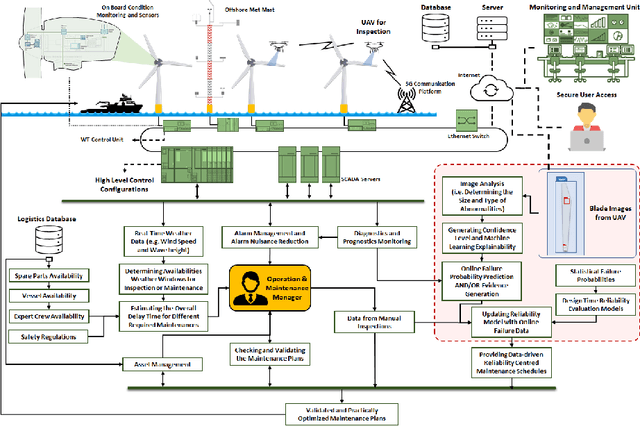
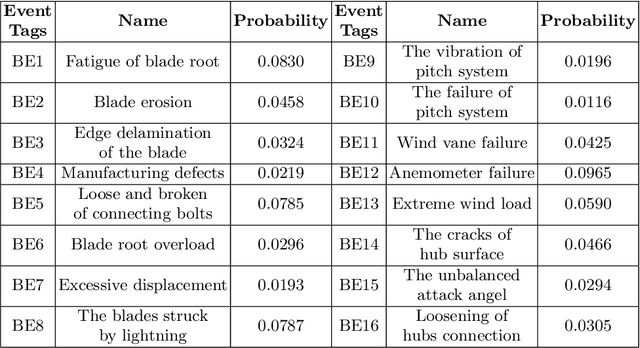


Abstract:The offshore wind energy is increasingly becoming an attractive source of energy due to having lower environmental impact. Effective operation and maintenance that ensures the maximum availability of the energy generation process using offshore facilities and minimal production cost are two key factors to improve the competitiveness of this energy source over other traditional sources of energy. Condition monitoring systems are widely used for health management of offshore wind farms to have improved operation and maintenance. Reliability of the wind farms are increasingly being evaluated to aid in the maintenance process and thereby to improve the availability of the farms. However, much of the reliability analysis is performed offline based on statistical data. In this article, we propose a drone-assisted monitoring based method for online reliability evaluation of wind turbines. A blade system of a wind turbine is used as an illustrative example to demonstrate the proposed approach.
A Deep Learning Framework for Wind Turbine Repair Action Prediction Using Alarm Sequences and Long Short Term Memory Algorithms
Jul 19, 2022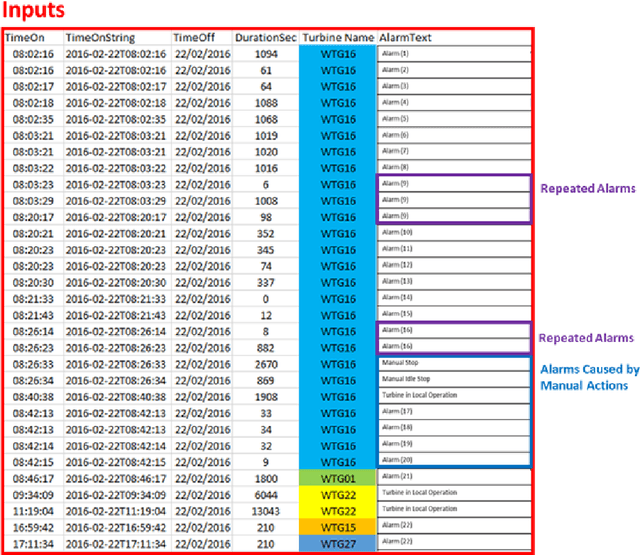



Abstract:With an increasing emphasis on driving down the costs of Operations and Maintenance (O$\&$M) in the Offshore Wind (OSW) sector, comes the requirement to explore new methodology and applications of Deep Learning (DL) to the domain. Condition-based monitoring (CBM) has been at the forefront of recent research developing alarm-based systems and data-driven decision making. This paper provides a brief insight into the research being conducted in this area, with a specific focus on alarm sequence modelling and the associated challenges faced in its implementation. The paper proposes a novel idea to predict a set of relevant repair actions from an input sequence of alarm sequences, comparing Long Short-term Memory (LSTM) and Bidirectional LSTM (biLSTM) models. Achieving training accuracy results of up to 80.23$\%$, and test accuracy results of up to 76.01$\%$ with biLSTM gives a strong indication to the potential benefits of the proposed approach that can be furthered in future research. The paper introduces a framework that integrates the proposed approach into O$\&$M procedures and discusses the potential benefits which include the reduction of a confusing plethora of alarms, as well as unnecessary vessel transfers to the turbines for fault diagnosis and correction.
SafeDrones: Real-Time Reliability Evaluation of UAVs using Executable Digital Dependable Identities
Jul 12, 2022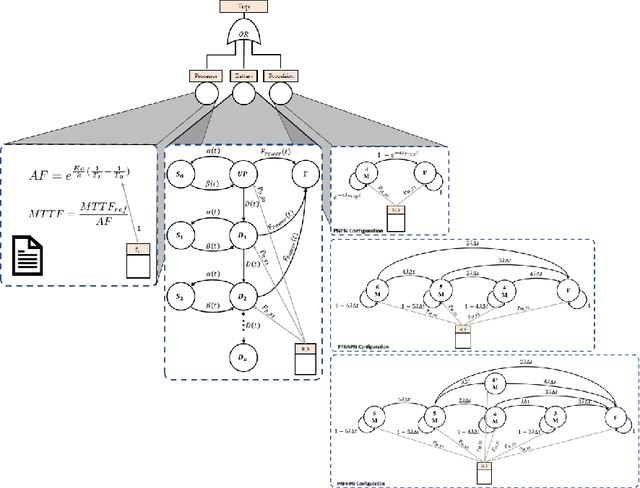
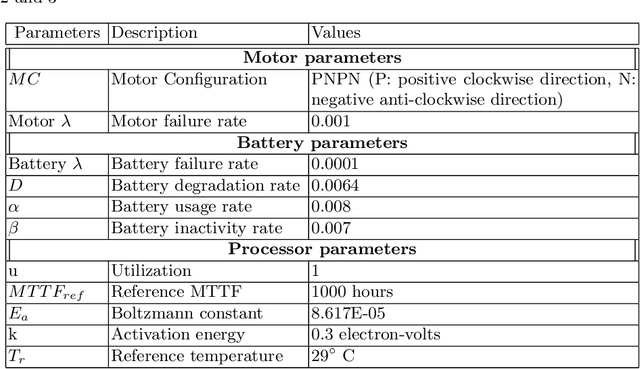
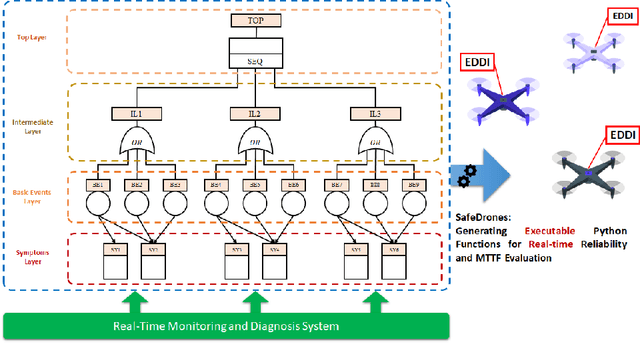

Abstract:The use of Unmanned Arial Vehicles (UAVs) offers many advantages across a variety of applications. However, safety assurance is a key barrier to widespread usage, especially given the unpredictable operational and environmental factors experienced by UAVs, which are hard to capture solely at design-time. This paper proposes a new reliability modeling approach called SafeDrones to help address this issue by enabling runtime reliability and risk assessment of UAVs. It is a prototype instantiation of the Executable Digital Dependable Identity (EDDI) concept, which aims to create a model-based solution for real-time, data-driven dependability assurance for multi-robot systems. By providing real-time reliability estimates, SafeDrones allows UAVs to update their missions accordingly in an adaptive manner.
SafeML: Safety Monitoring of Machine Learning Classifiers through Statistical Difference Measure
May 27, 2020



Abstract:Ensuring safety and explainability of machine learning (ML) is a topic of increasing relevance as data-driven applications venture into safety-critical application domains, traditionally committed to high safety standards that are not satisfied with an exclusive testing approach of otherwise inaccessible black-box systems. Especially the interaction between safety and security is a central challenge, as security violations can lead to compromised safety. The contribution of this paper to addressing both safety and security within a single concept of protection applicable during the operation of ML systems is active monitoring of the behaviour and the operational context of the data-driven system based on distance measures of the Empirical Cumulative Distribution Function (ECDF). We investigate abstract datasets (XOR, Spiral, Circle) and current security-specific datasets for intrusion detection (CICIDS2017) of simulated network traffic, using distributional shift detection measures including the Kolmogorov-Smirnov, Kuiper, Anderson-Darling, Wasserstein and mixed Wasserstein-Anderson-Darling measures. Our preliminary findings indicate that the approach can provide a basis for detecting whether the application context of an ML component is valid in the safety-security. Our preliminary code and results are available at https://github.com/ISorokos/SafeML.
PeSOA: Penguins Search Optimisation Algorithm for Global Optimisation Problems
Sep 27, 2018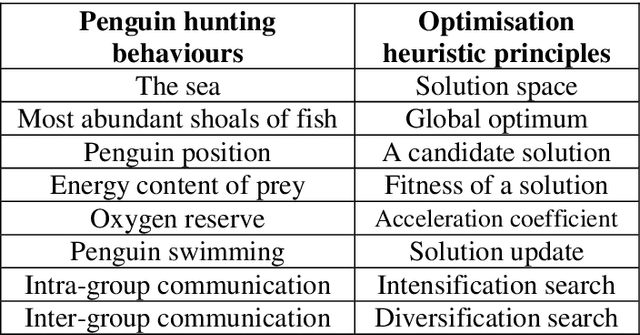
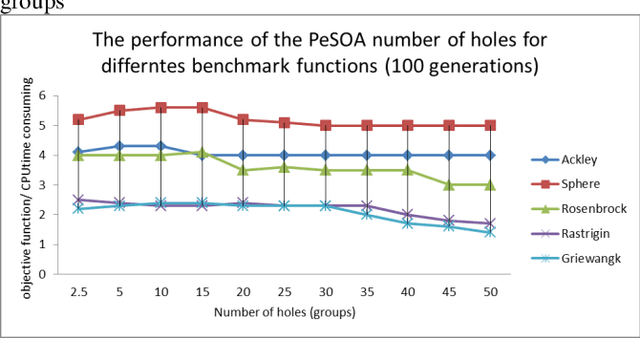
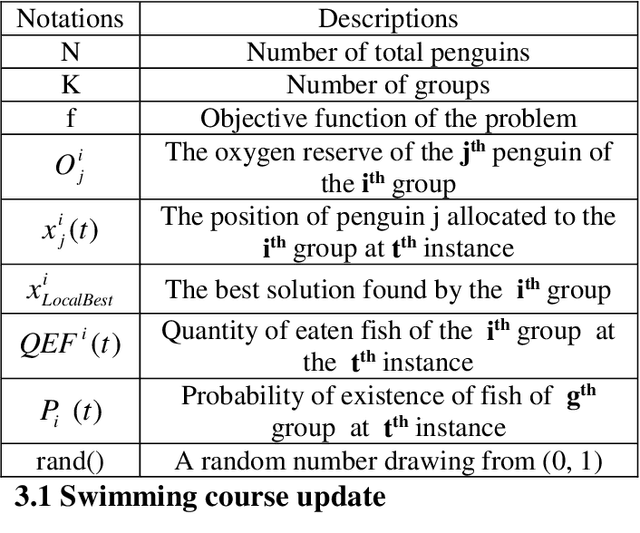
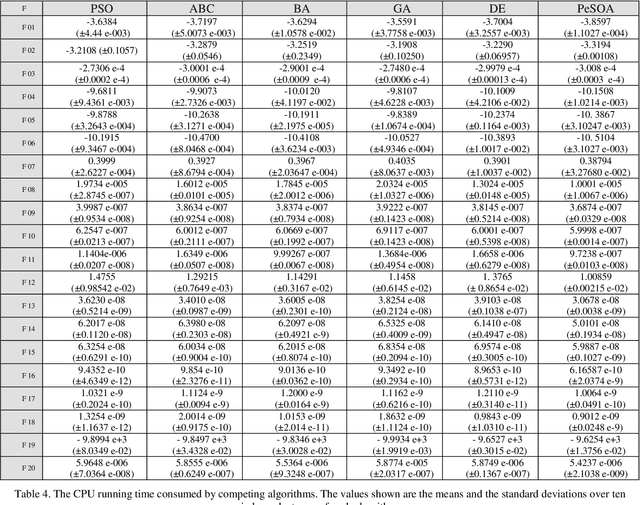
Abstract:This paper develops Penguin search Optimisation Algorithm (PeSOA), a new metaheuristic algorithm which is inspired by the foraging behaviours of penguins. A population of penguins located in the solution space of the given search and optimisation problem is divided into groups and tasked with finding optimal solutions. The penguins of a group perform simultaneous dives and work as a team to collaboratively feed on fish the energy content of which corresponds to the fitness of candidate solutions. Fish stocks have higher fitness and concentration near areas of solution optima and thus drive the search. Penguins can migrate to other places if their original habitat lacks food. We identify two forms of penguin communication both intra-group and inter-group which are useful in designing intensification and diversification strategies. An efficient intensification strategy allows fast convergence to a local optimum, whereas an effective diversification strategy avoids cyclic behaviour around local optima and explores more effectively the space of potential solutions. The proposed PeSOA algorithm has been validated on a well-known set of benchmark functions. Comparative performances with six other nature-inspired metaheuristics show that the PeSOA performs favourably in these tests. A run-time analysis shows that the performance obtained by the PeSOA is very stable at any time of the evolution horizon, making the PeSOA a viable approach for real world applications.
 Add to Chrome
Add to Chrome Add to Firefox
Add to Firefox Add to Edge
Add to Edge